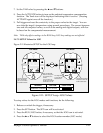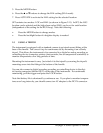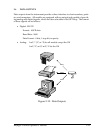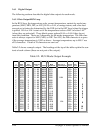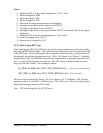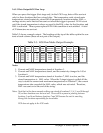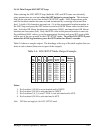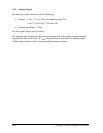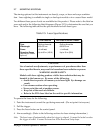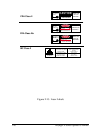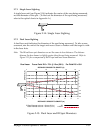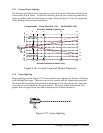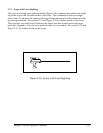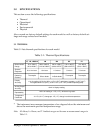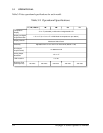
Raynger 3i Series Operator’s Manual 2-29
2.7 SIGHTING SYSTEMS
The aiming options for this instrument are laser(s), scope, or laser and scope combina-
tion. Laser sighting is available in single or dual spot models or in a crossed laser model.
Two different laser power levels are available for this product. Please refer to the label on
your unit and to the following label diagrams (Figure 2-13) to determine the one that you
have. The following table shows the specifications for both laser types.
CAUTION
Use of controls or adjustments, or performance of procedures other than
those specified herein, may result in hazardous laser radiation exposure.
WARNING—LASER SAFETY
Models with laser sighting produce visible laser radiation that may be
harmful to the human eye. Be aware of the following:
• Avoid direct exposure of human eyes to laser light. Eye damage can
result.
• Use extreme caution when operating.
• Never point the unit at another person.
• Keep out of the reach of children.
• Refer to the FDA laser label on the unit for specific information.
To operate the laser, do the following:
1. Point the instrument toward the spot being measured. (Do not point it at anyone.)
2. Pull the trigger.
3. Press the Laser button on the control panel.
4. Aim accordingly. (Refer to the following sections for laser aiming information.)
Note: The laser turns off automatically when the trigger is released. It cannot be locked on when
the trigger is locked. It cannot be turned on in the Recall and Setup loops.
FDA Class IIIa FDA Class II and IEC Class 2
Type
Wavelength
Power
Operating Range
(depending on ambient
light level)
Gallium Arsenide
630-670 nm
<5 milliwatt
Up to 30 m (100 ft)
Gallium Arsenide
630-670 nm
<1 milliwatt
Up to 15 m (50 ft)
Table 2-5: Laser Specifications



